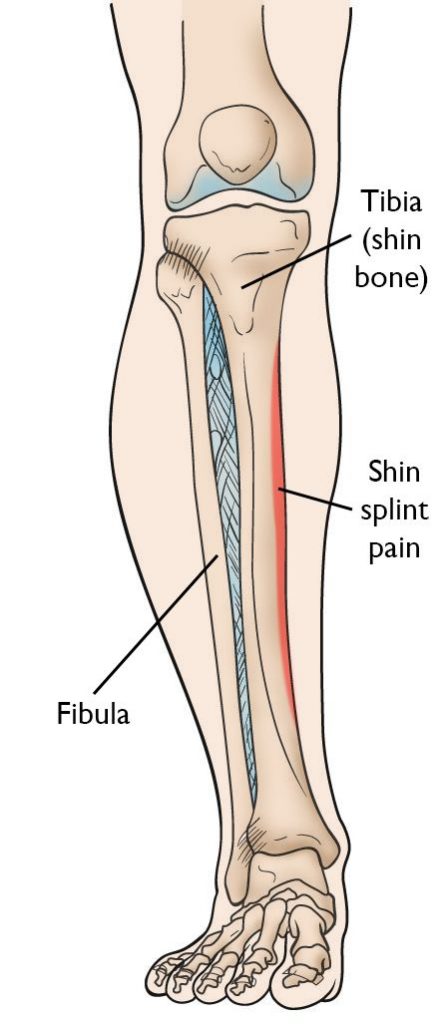Have you ever felt your shins hurt when doing activities? maybe you are experiencing shin splint.
Shin splints is an injury to the lower leg characterized by pain along the postero-medial side of the tibia. Shin splints are also known by the name medial tibialis stress syndrome. This injury is classified as overuse injury.(1) American Medical Association in 1966 defined shin splint as pain and discomfort in the lower limbs as a result of activity berulang as a result of force and excessive use of the leg flexor muscles, where the injury condition must be limited to musculoskeletal inflammation only and exclude stress fractures or ischemic disorders.(2)

(Sumber: orthoinfo.aaos.org)
Shin splints occurs in 35% of the general athlete population and up to 20% of track athletes.(1,3) Within a 1 year period, approximately 70% of running athletes can experience this injury. shin splint occurs in 7.2% -35% in military personnel, and in football players.(3)
Causes of Shin Splints
The exact cause of the occurrence shin splint It's still unclear, but there are several factors that are thought to trigger it shin splint. Stress Repetition received by the lower limbs during activities or during exercise will cause micro-damage to the lower limb tissue that exceeds the recovery threshold. Even though stress what the lower limb receives in this case is not stress optimally with adequate rest so that it can strengthen bone density. Mistakes when exercising such as suddenly increasing exercise intensity with unsupportive footwear and hard surfaces can trigger this shin splint.(3)
When someone experiences shin splint, Generally you will feel pain in the middle ⅔ of the lower shin. The pain is "dull" and can be "sharp" if felt on the outside. The pain felt will increase during activity and decrease when resting. The pain can also be felt until the next day, but will improve over time.(3)
What Should You Do When You Have Shin Splints?
1. Rest
The pain felt when experiencing shin splint will decrease with rest. By resting, we also give our body the opportunity to recover from the injury experienced.
2. Strengthening Exercises
When you experience an injury, it is important to carry out a strengthening program to avoid experiencing the same injury again. The strengthening exercises carried out in this case focus on strengthening the leg and abdominal muscles. Some examples of exercises that can be done are: clamshell, side lying stright leg raise, fire hydrant, plank, side plank, and other leg strengthening exercises. Exercise is done progressively without forcing your own abilities.
3. Stretching
Stretching is done to maintain joint and muscle mobility. When injured, muscles tend to become stiff. Stretching is also done to prevent a decrease in joint range of motion and maintain muscle elasticity and flexibility.(4)
Baca Juga : Penyebab Nyeri Pada Telapak Kaki dan Cara Mengatasinya!
Reference:
- Hamstra-Wright KL, Bliven KC, Bay C. Risk factors for medial tibial stress syndrome in physically active individuals such as runners and military personnel: a systematic review and meta-analysis. Br J Sports Med. 2015;49(6):362–369.
- Jovicić, M., Jovicić, V., Hrković, M., & Lazović, M. (2014). Medial tibial stress syndrome: case report. Medicinski pregled, 67(7-8), 247–251. https://doi.org/10.2298/mpns1408247j
- Alfayez SM, Ahmed ML, Alomar AZ. A review article of medial tibial stress syndrome. J Musculoskelet Surg Res 2017;1:2-5
- SANFORD ORTHOPEDIC SPORT MEDICINE. Medial Tibialis Stress Syndrom Rehabilitation Guideline. 2016





